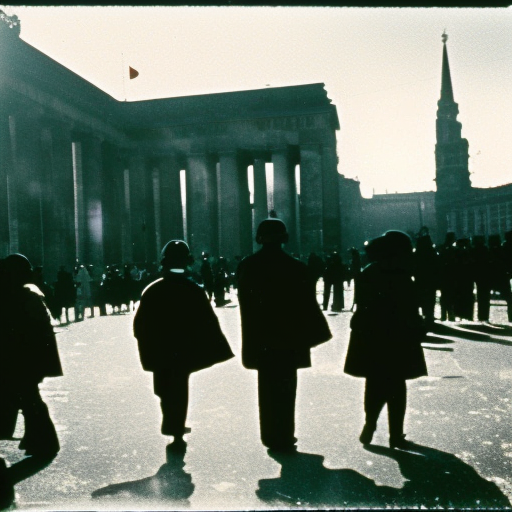Berlin Crisis of 1961: A Summary
The Berlin Crisis of 1961 was a significant event during the Cold War that heightened tensions between the United States and the Soviet Union. It centered around the divided city of Berlin, which had been divided into East and West Berlin since the end of World War II. The crisis culminated in the construction of the Berlin Wall, a physical barrier that separated East and West Berlin for nearly three decades.
The Background
After World War II, Germany was divided into four zones of occupation, each controlled by one of the Allied powers: the United States, the Soviet Union, Great Britain, and France. The city of Berlin, located deep within the Soviet zone, was also divided into four sectors. In the years following the war, tensions between the Soviet Union and the Western Allies grew, leading to the division of Germany into two separate countries: the Federal Republic of Germany (West Germany) and the German Democratic Republic (East Germany).
The Berlin Wall
In the early 1960s, East Germany faced a significant problem as thousands of its citizens were fleeing to West Germany through West Berlin. This mass exodus was a blow to the East German economy and a symbol of the failure of communism. In response, the East German government, with the support of the Soviet Union, decided to build a wall to prevent further defections.
On August 13, 1961, construction of the Berlin Wall began. The wall was initially made of barbed wire and quickly evolved into a concrete structure with guard towers, checkpoints, and a heavily fortified “death strip” in between. The wall effectively cut off East Berlin from West Berlin, trapping East Germans behind the Iron Curtain.
The International Response
The construction of the Berlin Wall sparked international outrage. The United States and its Western allies condemned the wall as a violation of human rights and a symbol of Soviet oppression. President John F. Kennedy declared his support for West Berlin, famously stating, “Ich bin ein Berliner” (I am a Berliner) in a speech in June 1963.
The United States and its allies responded to the crisis by increasing military presence in West Berlin and implementing economic sanctions against East Germany. The Soviet Union, on the other hand, defended the construction of the wall as a necessary measure to protect East Germany from Western influence.
The Impact
The Berlin Crisis of 1961 had far-reaching consequences. The construction of the Berlin Wall solidified the division of Germany and symbolized the broader division between the Western and Eastern blocs during the Cold War. It became a powerful symbol of the Iron Curtain and the oppressive nature of the Soviet regime.
The wall remained in place for nearly three decades, separating families and friends and serving as a constant reminder of the tensions between East and West. It became a focal point for protests and demonstrations against the Soviet Union and East German government.
The fall of the Berlin Wall in 1989 marked the end of the Cold War and the reunification of Germany. It was a momentous event that symbolized the triumph of democracy and freedom over communism. The Berlin Crisis of 1961 played a significant role in shaping the events that led to the fall of the wall and the reunification of Germany.
In conclusion, the Berlin Crisis of 1961 was a pivotal event during the Cold War that resulted in the construction of the Berlin Wall. The wall became a symbol of the division between East and West and the oppressive nature of the Soviet regime. The crisis heightened tensions between the United States and the Soviet Union and had far-reaching consequences for Germany and the world.












